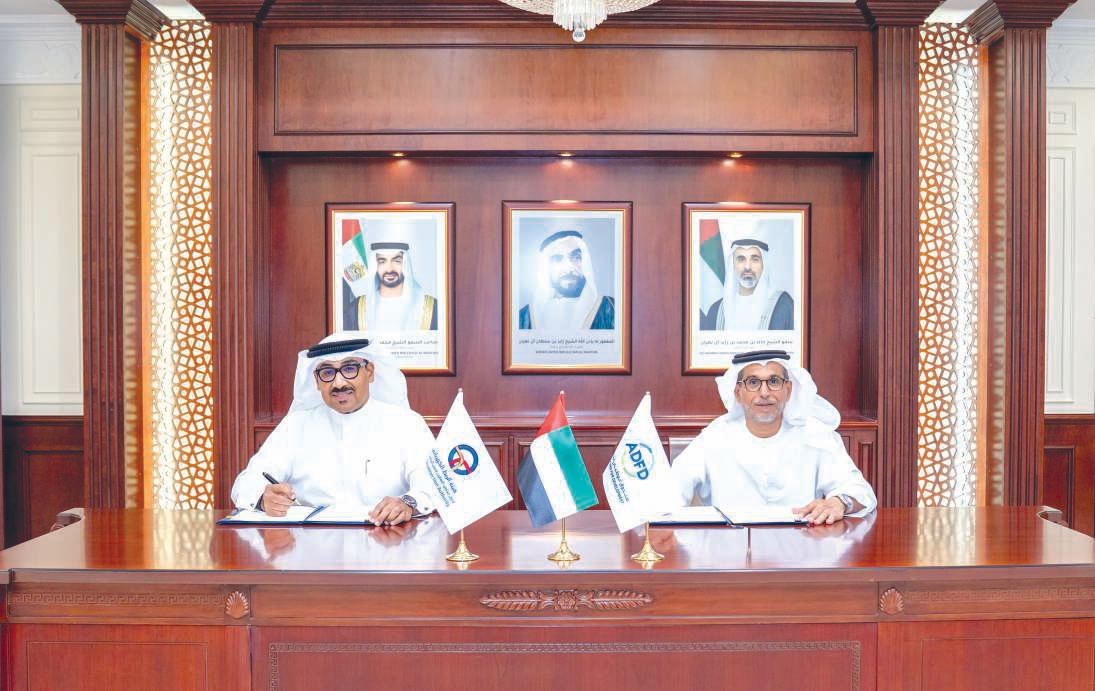
Abu Dhabi Fund for Development has advanced regional energy integration by extending AED 752 million to the Gulf Cooperation Council Interconnection Authority, supporting the expansion of the UAE’s national grid interconnection with the wider GCC electricity network. This strategic financing, signed at ADFD headquarters in Abu Dhabi, aims to enhance cross-border power exchange and reinforce regional energy reliability.
The deal facilitates construction of a 96 km, 400 kV double-circuit overhead transmission line between the Al Silaa substation in the UAE and Salwa in Saudi Arabia. It also covers upgrades to the Gonan, Al Silaa and Salwa substations, including installation of next-generation switchgears, circuit breakers, reactors, and modern protection-control systems. These enhancements are expected to elevate transmission capacity from 2,400 MW to 3,500 MW.
Mohammed Saif Al Suwaidi, director-general of ADFD, emphasised the fund’s role in supporting high-impact infrastructure aligned with national priorities and facilitating the transition to cleaner energy. He described the initiative as a “strategic enabler of energy security” that will boost grid efficiency, enhance emergency readiness, strengthen partnerships across the Gulf, and enable wider integration of renewables.
GCCIA CEO Ahmed Ali Al Ebrahim hailed the agreement as the first phase of a regional programme that includes grid connections with Kuwait, Oman, and southern Iraq, with total investment expected to exceed $1 billion. He also projected that expanding transmission capacity could unlock economic opportunities valued at more than $20 billion over the next 15 years.
These initiatives are central to the GCCIA’s vision of forging a resilient, interconnected power system. Technical and economic feasibility studies have underpinned the project design, ensuring it meets anticipated future demand.
This expanded interconnection supports the UAE Energy Strategy 2050, which targets a sustainable and cost-efficient energy ecosystem, and aligns with collective GCC goals for energy security, economic integration, and emissions reduction.
The upgrades are also set to enhance grid reliability and operational flexibility. The new 400 kV lines and upgraded substations, equipped with advanced protection and control technologies, will improve performance under stress and during emergencies, reinforcing stability across the network.
By facilitating cross-border electricity trade, the project lays groundwork for a unified Gulf electricity market. Al Ebrahim asserted this could open up significant economic potential, projecting gains exceeding $20 billion over 15 years.
The broader vision embraces enhanced integration of renewable energy, helping GCC states meet sustainability objectives. Regional interconnection enables efficient distribution of solar and wind-generated power, addressing demand variations and curbing carbon emissions in line with global climate commitments.
ADFD’s financing reflects its established track record in backing infrastructure and development projects through concessionary loans. Established in 1971, the fund has supported both domestic UAE goals and international aid initiatives.
GCCIA, the body responsible for coordinating the Gulf’s interconnection system, currently links Kuwait, Saudi Arabia, Bahrain, Qatar and the UAE. The expanded network capacity will enhance its technical resilience and capacity to support growing electricity needs, including future peaks and evolving regional dynamics.



